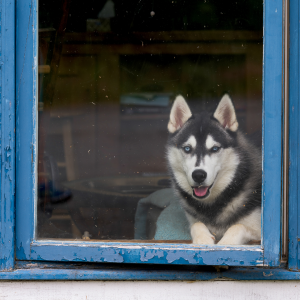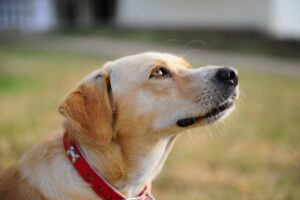Bringing home a rescue dog is an incredibly rewarding experience. However, it also requires careful preparation and patience to ensure a smooth transition for your new furry family member. Helping your rescue dog adapt to his new home involves several key steps, from choosing the right supplies to establishing routines and building trust. This guide will provide essential tips and strategies to help your dog feel comfortable and secure in his new environment.
Choosing the Right Supplies for Your Pet
- Essential Items
- Food and water bowls
- Leash, collar, and ID tags
- Comfortable bed and/or crate
- Toys for mental stimulation
- Grooming supplies
- Optional Items
- Training treats
- Interactive toys
- Pet-safe cleaning products
Setting Up a Safe Space for Your Adopted Dog
Creating a safe and calm environment for your new dog is crucial. Designate a quiet area where your dog can retreat and feel secure. Equip this space with a bed, toys, and water. Additionally, dog-proof your home by removing hazardous items and securing trash cans. Block off restricted areas to prevent accidents and ensure your dog’s safety.
Preparing the Family for Your Furry Friend
Involving all family members in the process of bringing home a rescue dog is a good idea. Hold a family meeting to discuss roles and responsibilities, setting clear rules and expectations for interactions with the new dog. Ensure everyone understands the importance of patience and consistency during this transition period.
Introducing a New Environment
Introduce your dog to different areas of your home gradually. Allow your dog to explore and get comfortable at his own pace. This gradual introduction helps reduce anxiety and builds familiarity with the new environment.
Establishing a Routine
A consistent daily schedule is essential for helping your rescue dog adapt. Set regular times for feeding, walks, playtime, and bathroom breaks. Routine helps reduce anxiety and builds trust, making your dog feel more secure in his new home.
First Vet Visit
Schedule a vet visit soon after adoption to ensure your dog’s health. Discuss vaccinations, flea/tick prevention, and any health concerns with the vet. This initial check-up is crucial for identifying any potential health issues and setting up a care plan.
Feeding Schedule and Nutrition
Choose high-quality food appropriate for your dog’s age and health needs. Establish regular feeding times to create a routine. Consistent feeding schedules help regulate your dog’s digestion and provide a sense of stability.
House Training Basics
House training is a crucial step in helping your rescue dog adapt to his new home. It requires consistency, patience, and positive reinforcement to ensure your dog learns where and when it is appropriate to relieve himself.
- Effective Techniques
- Frequent outdoor trips and positive reinforcement.
- Address accidents with patience, not punishment.
- Use crates and training pads.
- Provide consistent commands and rewards.
- Keep a close eye on your dog’s behavior for signs they need to go out.
- Take your dog outside after meals, naps, and play sessions.
- Choose a specific spot outside for your dog to use as a bathroom.
- Take your dog to the same spot each time to create a habit.
- Maintain a consistent feeding schedule to regulate your dog’s bathroom needs.
- Monitor food and water intake to predict when they might need to go out.
- Limit water intake before bedtime to reduce nighttime accidents.
- Take your dog out for a final bathroom break before going to bed.
- Use enzymatic cleaners to remove odors and prevent re-marking.
- Avoid using ammonia-based cleaners as they can mimic the smell of urine
Socialization Strategies
Gradually expose your dog to new people, pets, and environments to build social skills. Use treats and praise to reinforce positive interactions, creating positive experiences for your dog.
Exercise Needs
Regular physical activity is vital for your dog’s health and well-being. Provide daily walks and playtime to burn off energy and reduce stress. Include a variety of activities like fetch, agility training, and hikes to keep your dog engaged and active. Since the activity level needs of different breeds vary, be sure to learn what your pup will need to be content and healthy.
Mental Stimulation

Provide interactive toys that challenge your dog’s mind and play games. Incorporate training sessions as a form of mental exercise. Mental stimulation helps prevent boredom and promotes overall well-being.
Positive Reinforcement Training
Use reward-based techniques to encourage good behavior. Treats and praise are effective tools for positive reinforcement. Ensure all family members use the same commands and rewards to maintain consistency.
Handling Separation Anxiety
Start with short absences and gradually increase the time away to help your dog adjust. Provide comfort items that smell like you to soothe your dog during your absence.
Recognizing Stress Signals
Learn to identify signs of stress like panting, whining, or hiding. Address stress by providing comfort and removing stressors when possible.
Building Trust and Bonding
Spend quality time playing, training, and cuddling with your dog. Use gentle handling and positive reinforcement to build trust. Building a strong bond with your dog enhances his sense of security and well-being.
Introducing Other Pets
Gradual introductions with supervision are key to a smooth transition. Reward calm and friendly behavior to encourage positive interactions between your dog and other pets.

Grooming
Regular grooming is essential for maintaining your dog’s health. Brush, bathe, and trim your dog’s nails as needed. Make grooming a routine part of your dog’s life to reduce anxiety and keep him looking and feeling his best.
Long-Term Care and Commitment
Recognize that adopting a dog is a lifelong commitment. Prepare for long-term care needs and potential changes in your dog’s health. Understanding and planning for the future ensures that your dog will be well cared for throughout his life.
Adopting a rescue dog is a rewarding journey that requires patience, preparation, and commitment. By following these steps and strategies, you can help your rescue dog adapt to his new home, ensuring a happy and healthy future together. Remember, the effort you put in now will pay off in a lifelong bond with your new furry family member.

Helping your rescue dog adapt to his new home is a journey filled with love and dedication. By involving all family members and understanding the needs of your new pet, you create a nurturing environment that helps your dog thrive. Adopting a dog is not just a good idea; it’s a commitment to providing a forever home filled with care and compassion.
In addition to the steps outlined above, here are some additional resources to help you as you navigate the journey of helping your rescue dog adapt to his new home:
- ASPCA – General Pet Care
- Comprehensive guide on caring for your pet, including training, nutrition, and health tips.
- The Humane Society – Adopting a Pet
- Detailed information on the adoption process, including preparation, integration, and care tips.
- American Kennel Club – Dog Training Resources
- Extensive training guides and tips for house training, obedience, and behavior modification.
- Petfinder – Dog Adoption Guide
- Tips and advice for the first 30 days after adopting a dog, including settling in and establishing routines.
- Forever Husky – Training Guides
- Specific training guides tailored for huskies, including obedience, socialization, and behavior tips.
These resources offer valuable information and support to ensure you and your new dog have a successful and fulfilling journey together. By leveraging these tools and applying the tips outlined in this guide, you’ll be well on your way to creating a happy and harmonious home for your rescue dog.





